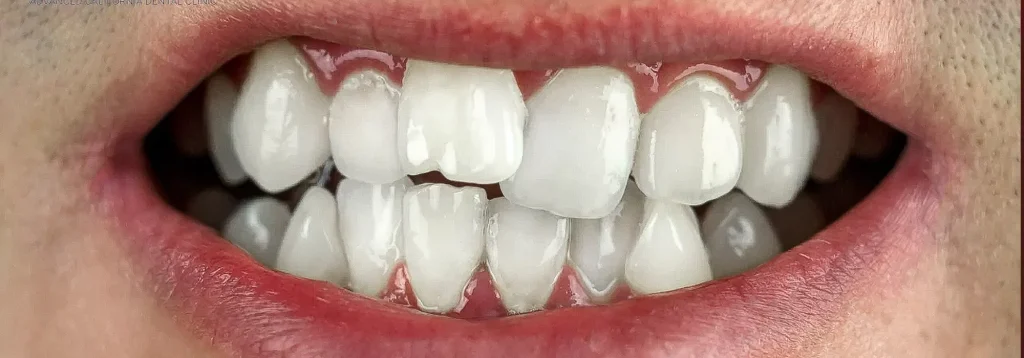Overcrowding
Overcrowding is a common dental issue that occurs when there is insufficient space in the jaw to accommodate all the teeth properly. It can lead to various problems, including misalignment, overlapping, and rotation of the teeth. Overcrowding can occur due to genetic factors, inadequate jaw size, early loss of primary (baby) teeth, or improper eruption patterns of permanent teeth.

Overcrowded teeth can present several challenges:
- Aesthetics: Overcrowding can affect the appearance of your smile, causing teeth to appear crooked or misaligned. This can impact your self-confidence and overall facial aesthetics.
- Tooth Decay and Gum Disease: Overcrowded teeth are more challenging to clean effectively. The tight spaces between crowded teeth make it difficult to reach and remove plaque and food debris, increasing the risk of tooth decay and gum disease.
- Bite Problems: Overcrowding can result in bite problems such as crossbite, overbite, or underbite. These bite issues can lead to difficulties in chewing, speaking, and overall oral function.

To address overcrowding, orthodontic treatment is often recommended. The specific treatment options will depend on the severity of the overcrowding and the individual’s overall dental condition. Here are a few common approaches:
- Braces: Traditional braces consist of brackets, archwires, and elastic bands that work together to gradually shift teeth into their proper positions. Braces can effectively address overcrowding by applying gentle, controlled forces to align the teeth over time.
- Clear Aligners: Clear aligners, such as Invisalign, are transparent, removable trays that gradually move the teeth. They provide a more discreet alternative to traditional braces and can be effective for mild to moderate cases of overcrowding.
- Tooth Extraction: In some cases of severe overcrowding, tooth extraction may be necessary to create enough space for proper alignment. The decision to extract teeth is typically made after careful evaluation by an orthodontist.
- Palatal Expansion: For cases where the upper jaw is too narrow and causes overcrowding, palatal expansion may be recommended. This technique involves widening the upper jaw to create additional space for the teeth.
Orthodontic treatment for overcrowding typically requires regular visits to the orthodontist for adjustments and monitoring progress. The duration of treatment can vary depending on the severity of the overcrowding and the chosen treatment approach.
It’s important to consult with an orthodontist who can evaluate your specific case and recommend the most appropriate treatment options to address your overcrowding and achieve a healthier, more aligned smile.


